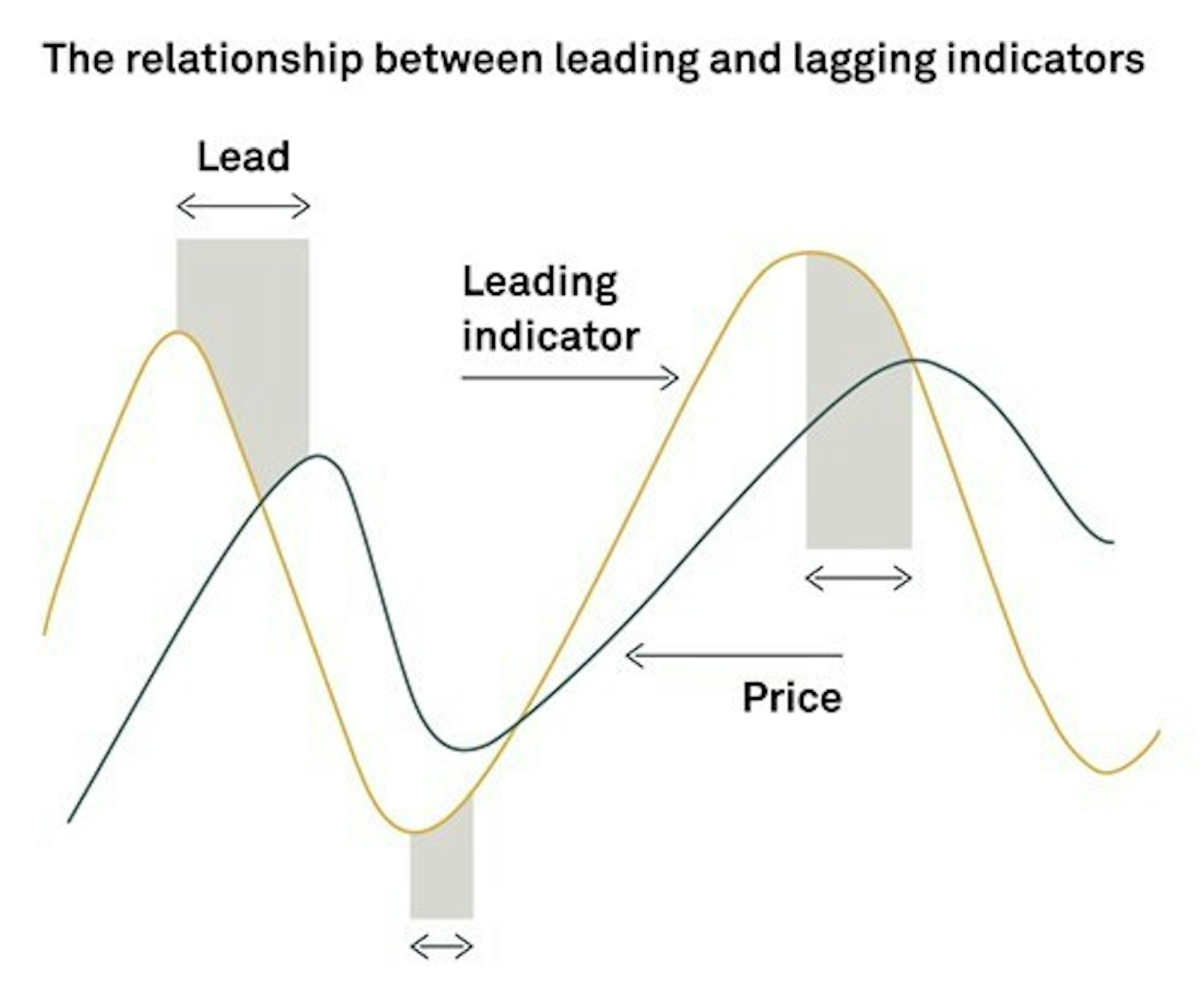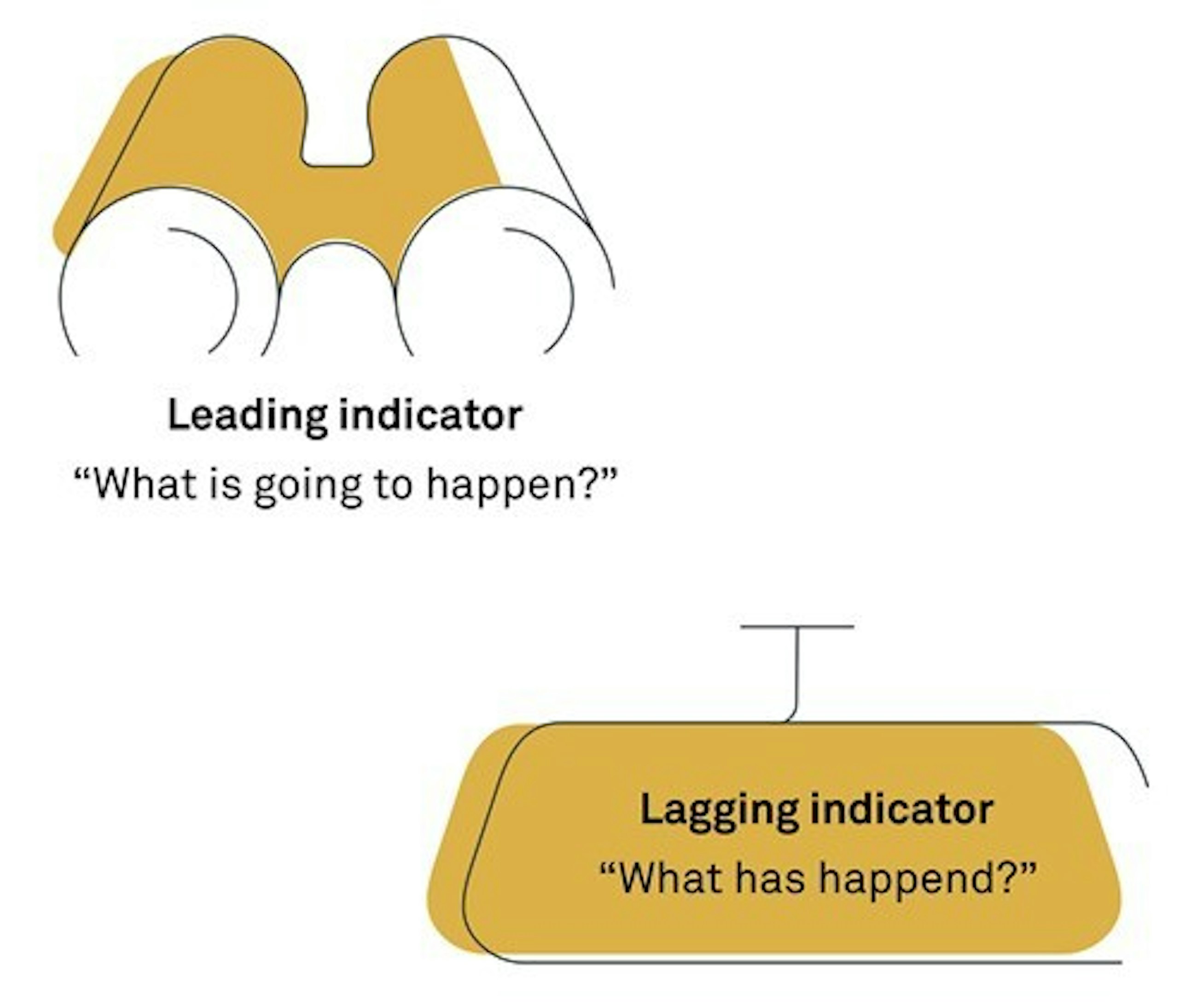– between leading and lagging performance indicators.
1 October 2020
Leading and lagging indicators are two types of measurements used when assessing performance in a business or organisation.
- A leading indicator is a predictive measurement – e.g. the percentage of people wearing hard hats on a building site is a leading safety indicator.
- A lagging indicator is an output measurement – e.g. the number of accidents on a building site is a lagging safety indicator.
Leading indicators are typically input-oriented, hard to measure and easy to influence, whereas lagging indicators are typically output-oriented, easy to measure but hard to improve or influence. That is, leading indicators are “ex ante” indicators, whereas lagging indicators are “ex post” indicators.
When designing and implementing performance management systems, it is important to strike a balance between these two types of performance indicators. Leading indicators are important since they allow you to gaze into the crystal ball, foresee future trends and initiate mitigating actions if predictions are unfavourable. Lagging indicators are important since they allow you to monitor and track the actual performance when it has occurred.
Most companies struggle to identify relevant leading indicators, which is why leading indicators are often highlighted by consultants and advisers alike. This is a valid point, but it is not a matter of selecting between leading or lagging indicators – it is not a matter of either-or. Both are relevant. Leading indicators have an inherent risk of being misleading, as the predicted performance might not end up as indicated after all. Performance is rarely the result of a single cause and effect relationship, but rather it arises from a myriad of parameters accumulating to the end result.
Consequently, you need to strike a balance between reporting on leading and lagging indicators to steer the organisation towards the achievement of their strategic objectives.



